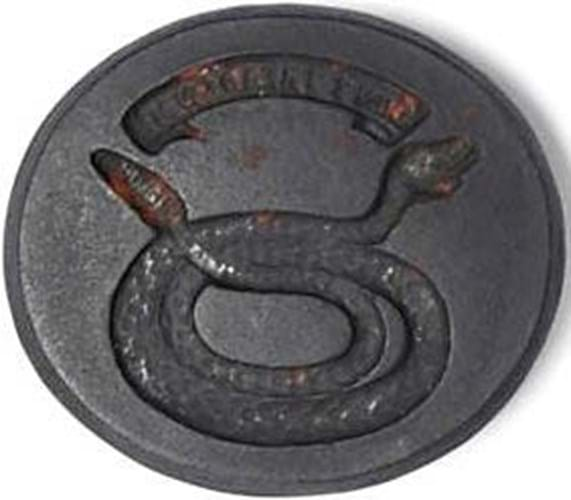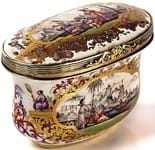
Dated c.1777, it depicts a timber rattlesnake coiled beneath a banner inscribed Don’t Tread On Me. Estimated at £150-250 at the auction on October 7, the hammer price in this Salisbury auction was £4500.
This motif, today known at the Gadsden flag, was one popularised by Benjamin Franklin for colonial propaganda.
In 1751, he made the first reference to the rattlesnake in a satirical commentary published in his Pennsylvania Gazette. It had been the policy of Parliament to send convicted criminals to the Americas (primarily to Georgia), so Franklin suggested that they thank them by sending rattlesnakes to Britain.
These basalt medallions were made by Josiah Wedgwood, humanitarian and libertarian, to distribute among his pro-American friends.
Although the model first appears in Wedgwood’s intaglio catalogue of 1787, production had begun 10 years prior.
Wedgwood was acutely aware of the potential issues that production of an article such as this could generate – particularly by a potter beloved of the royal family. In a letter to Thomas Bentley, dated August 8, 1777, he wrote: “I think it will be best to keep such unchristian articles for private trade.” The original biscuit ware intaglio mould is in the Victoria and Albert Museum.
Jacobite glass
Another item that could have put the maker in hot water at the moment of its manufacture was a rare Jacobite wine glass, c.1760-80. Raised on a double series opaque twist stem, the round funnel bowl is enamelled with a polychrome portrait of Prince Charles Edward Stuart.
Less than a dozen of these glasses are known, divided into two groups: those executed in red, blue, white, green and yellow enamels (such as this) and three executed in the narrower palette of red, blue and white.
Examples are in the collection of the National Museum of Scotland, the Ashmolean, the West Highland Museum in Fort William and the National Gallery of Victoria. The enameller is unknown but may be associated with the Scottish enameller Anthony Taylor, formerly of Newcastle upon Tyne.
This glass bears marked similarities to a set of six commissioned c.1775 by Thomas Erskine, later 9th Earl of Kellie, who was a member of a group of aristocratic Jacobites who continued to celebrate Bonnie Prince Charlie’s birthday until his death in 1788. Estimated at a modest £800-1200, the hammer price was £14,000.















